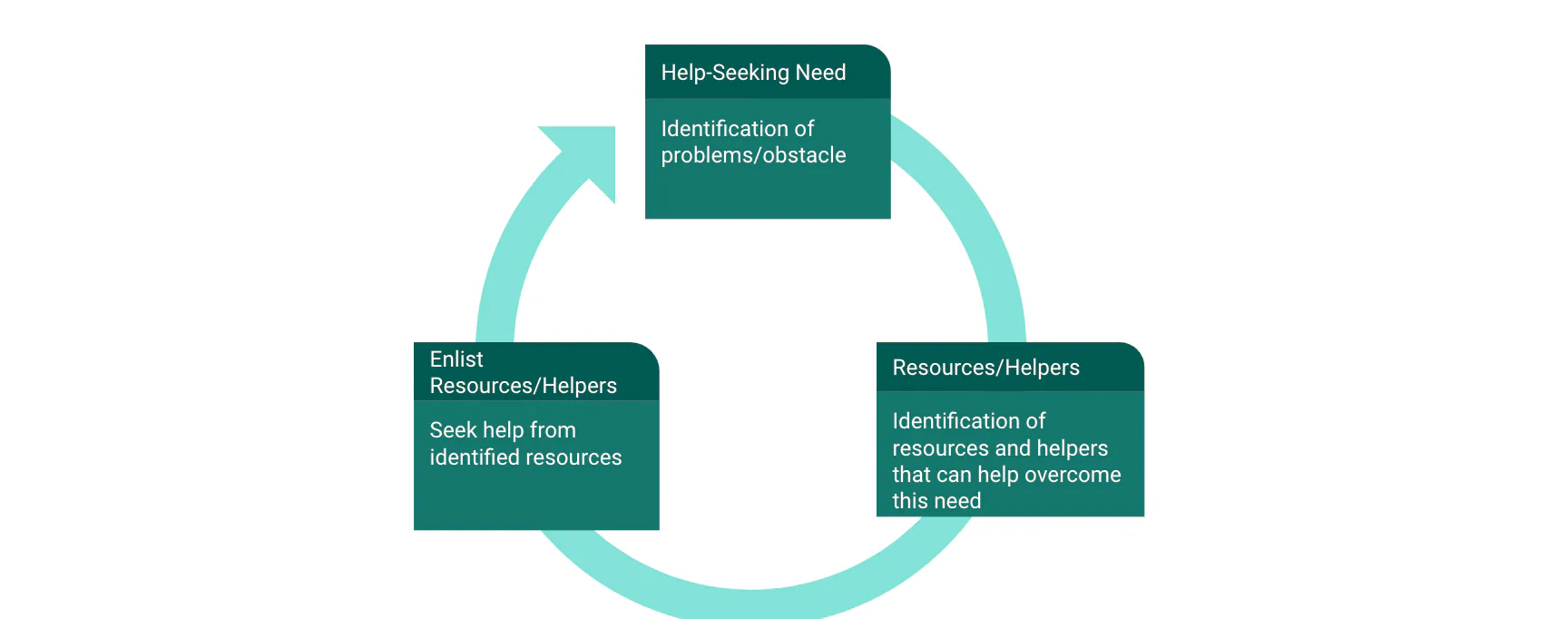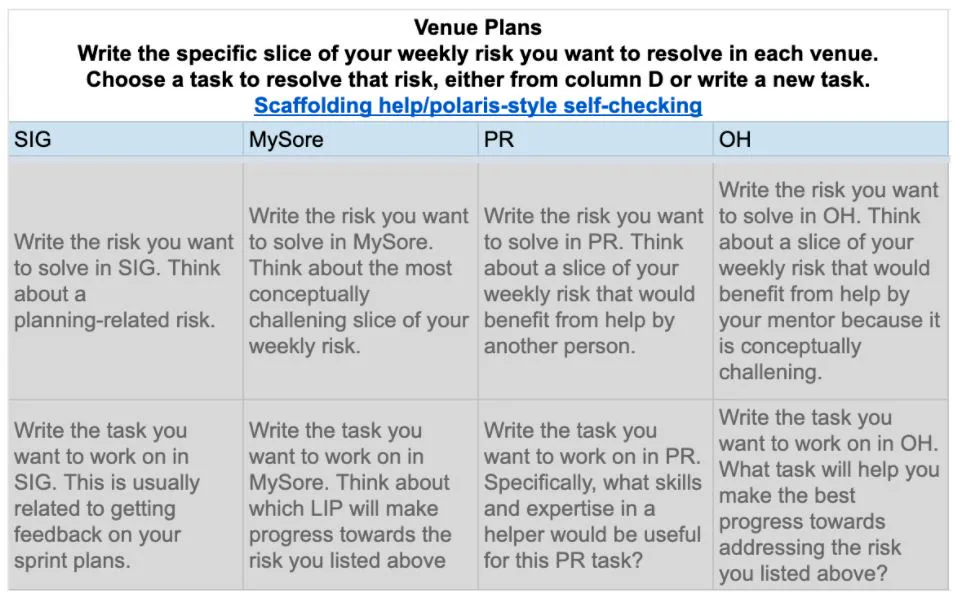Self-Directed Help Seeking and Skill Growth

Project description
Current work: Networked learning communities (NLC’s) are spaces designed for their members to collaborate on work and benefit from each other’s expertise, but in practice, members usually don’t leverage all of the resources available to them. Our solution, the STASH (Skill Tracking And Seeking Help) system, aims to overcome this with prompts that scaffold members to plan how to best utilize the resources and help venues available within the NLC and reminders that keep users on track with their weekly plan. The aim is that if users are able to plan out which resources could be used to best address different parts of their help needs, they can effectively leverage all of these resources both individually and in conjunction with each other over the course of a week. This is important because many help needs are so substantial that they cannot be addressed in one 30-minute time slot. We initially conducted design probe testing to create and find the prompts to use in our design to help the users effectively reflect on their help needs and choose tasks for each resource. We then built an interface with these prompts and implemented a reminder system and saw through testing that users were able to create plans that addressed their needs well and were conducive to the nature of each resource, while the reminders helped ground their weekly work in these plans.
Figures

Figure 1: An empty STASH planning view showing the venue plan boxes and associated prompts.
Team
Faculty
- Haoqi Zhang
Ph.D. Students
- Alumni: Leesha Maliakal Shah
Masters and Undergraduate Students
- Alumni: Aimee van den Berg
- Alumni: Ariella Silver
- Alumni: Natalie Ghidali
- Alumni: Sehmon Burnam
- Alumni: Shankar Salwan